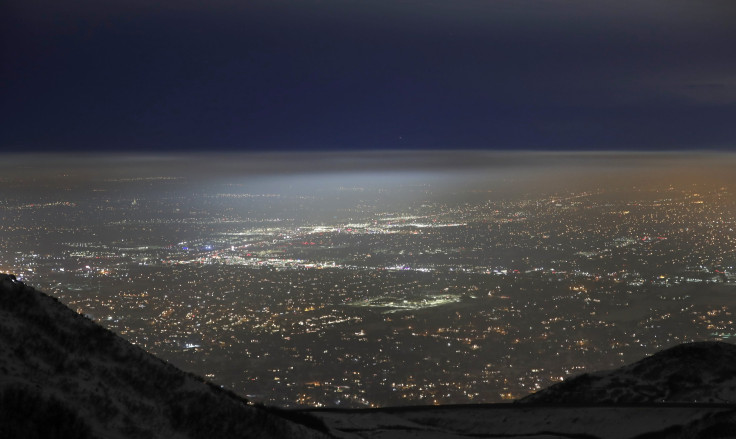How To Avoid Respiratory Infections Amid Rising Smog Due To Climate Change

President Donald Trump might not fully believe climate change is happening but nobody can deny most Americans are living in polluted counties. Unhealthy levels of smog and ragweed pollen, which are results of climate change, have put millions of people at risk of irritated eyes, noses, and lungs, a recent study said.
A recent study by the Natural Resources Defense Council (NRDC) found that climate change will increase the number of bad air days across most of the country. The polluted air will affect young children, older adults, people who work or exercise outside and more than 24 million asthma sufferers nationwide.
The analysis threw light on the future health hazards due to ragweed and ozone if the issue of climate change is not controlled soon, said Kim Knowlton, senior scientist at the NRDC, who oversaw the project. He said: "Today, 127 million Americans live where ragweed and ozone can threaten their next breath."
Read: 2017 Second Warmest Year Since 1880, Effect Of Global Climate Change:
Smog usually forms on warm, sunny days and gets worse when chemicals come out from vehicle tailpipes, power plant and industrial smokestacks. For those who are suffering from respiratory illnesses such as asthma and chronic obstructive pulmonary disease, smog is life risking. Allergies alone can be life-threatening, especially in children, USA Today reported quoting Perry Sheffield, a pediatrician at Mount Sinai in New York.
Talking about the states which have been hit by both smog and pollen, Juanita Constible of the NRDC said: "It’s ironic and tragic that the nation’s key ‘hot spot’ is Washington, D.C., the very place where wrongheaded policy threatens to make climate and pollution problems worse by the day. Instead of dismantling the Clean Power Plan, the federal government should focus on limiting smog, curbing power plant pollution and increasing vehicle fuel efficiency."
Not just this NRDC report, there have been other reports as well such as the National Climate Assessment, a federal report released in 2014, which had warned against increasing ozone levels and allergens in the backdrop of climate change.
The report also highlighted the rising levels of carbon dioxide (CO2) being responsible for growth of plants that release airborne aeroallergens, which triggers an allergic reaction. Changes in outdoor air quality and aeroallergens also affect indoor air quality as both pollutants and aeroallergens infiltrate homes, schools, and other buildings.
"Current levels of ground-level ozone have been estimated to be responsible for tens of thousands of hospital and emergency room visits, millions of cases of acuterespiratory symptoms and school absences, and thousands of premature deaths each year in the United States," the 2014 report stated.
But the question remains how to avoid these respiratory diseases as we live in the times of bad air days which is not going to end soon.
Experts say that if you exercise outside, you should do it in the morning, when ozone levels are comparatively lower, according to NRDC. They also caution people to avoid auto exhaust and heavily trafficked roads when jogging or walking. And if you want to do either of the two, try hitting a forest trail amid the greens or a walking path.
Another way to avoid breathing polluted air is by monitoring your local air-quality index (AQI), which assesses the danger of pollution and ozone smog. To ensure you don't inhale the toxic air coming from wildfires or other such issues in your area, sign up for alerts which will warn you in advance so you can plan your day accordingly.
A high count of pollen, which means misery for seasonal allergy sufferers, can be avoided on certain days alerts are followed regularly in newspapers, smartphone apps or on TV. On those days, stay indoors with the doors and windows closed, and if you’re running an air conditioner, set it to “recirculate.”
Read: Why Are Women Pumping ‘Toxic Gas’ Into Their Vaginas?
Other precautionary measures, as experts say, is taking a shower if you spend time outside on days when the air quality is poor. Then change into clean clothes afterward to wash off pollen and other fine particles that may have collected on your skin, hair and clothing by being exposed to bad air, a NRDC report said.
To keep your house clean so you don't catch respiratory infections, wash your bedding frequently.
© Copyright IBTimes 2025. All rights reserved.





















